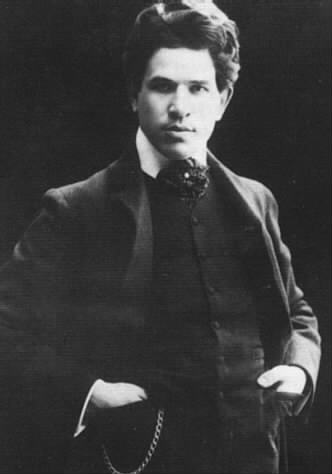To be published 2/12/08 in the Elmhurst College Leader.
---
Album: Debussy: Images/Prélude à l'apres-midi d'un faune
Artist(s): André Previn,
André Previn is one of those conductors who never achieved the god-like status of many contemporaries, yet consistently managed to turn in excellent and well-balanced performances. Furthermore, his affiliation with the London Symphony Orchestra is one of the better partnerships on record, and their collaborations are well represented on this and other Great Recordings of the Century discs.
Yet, what is likely this release’s greatest strength is its digital sound. Something of a marvel in 1979, this was EMI’s first venture into digital recording, and the album won Gramophone awards that year for both the performance and the sound engineering. If digital sound is an overarching concern, then, this release may be seen as the main competitor for Pierre Boulez’s excellent Debussy recordings on Deutsche Grammophon.
The present performance of Prelude to the Afternoon of a Faun is easily one of the finest on record. There is a lingering, indulgent, sensuous quality to the entire thing, which is entirely appropriate to the “mood paintings” of Doret’s lusting faun. The LSO’s sound is warm and full, and the strings are surprisingly rich, lending greater credence to the “preponderant influence of Wagner” alleged at the work’s premiere. Yet, Previn maintains a surprising transparency throughout the performance, thereby managing to aptly balance the exotic with the cerebral.
This same, palpable exoticism may be heard in the Images. Previn’s Gigues gets much closer to the English countryside than Boulez ever did (Keel Row actually sounds folksy here). Similarly, Ibéria conveys all the ardor of the Spain Debussy had in mind, but Boulez fares surprisingly well in comparison; where Previn uses a wide palette of colors and textures to portray the exotic, Boulez’s precise, crystalline intensity has an exoticism all its own. And Previn’s Rondes de Printemps is invigorating indeed, played with an eager, youthful impetus that leaves most other versions coughing in the dust. The liner notes claim that most of the cuts were done in single takes, and this energetic Printemps seems likely to be one of them.
The Nocturnes are somewhat less striking. Nuages works very well and is certainly be preferred over Boulez’s too-transparent rendition, but neither version truly captures the feeling of clouds. Fêtes is animated and played with a bludgeoning sort of gusto, but is not terribly cheery—a real shame, given the warm, upbeat approach Previn brought to the Images. But Sirénes is excellent, and the rich sound maintained through the album is again used to great effect. One can almost feel the ocean—waves roll lazily across the strings, swell through the horns, and come to majestic rest, all while the sirens sing with a distant, lovely, alluring femininity. It’s utterly splendid.
So, which to get, Previn or Boulez? While extremely different, both are equally valid approaches. Boulez’s precise, transparent style offers much to be admired, and his more complete survey of Debussy may give him an edge (particularly since his collection includes the magnificent La Mer). But Previn’s full-blooded renditions are certainly gorgeous. So why not get both? It’s great music. And at the moment, copies on Amazon appear to be starting in the $4-5 range. Such a deal.
Rating: A-

No comments:
Post a Comment